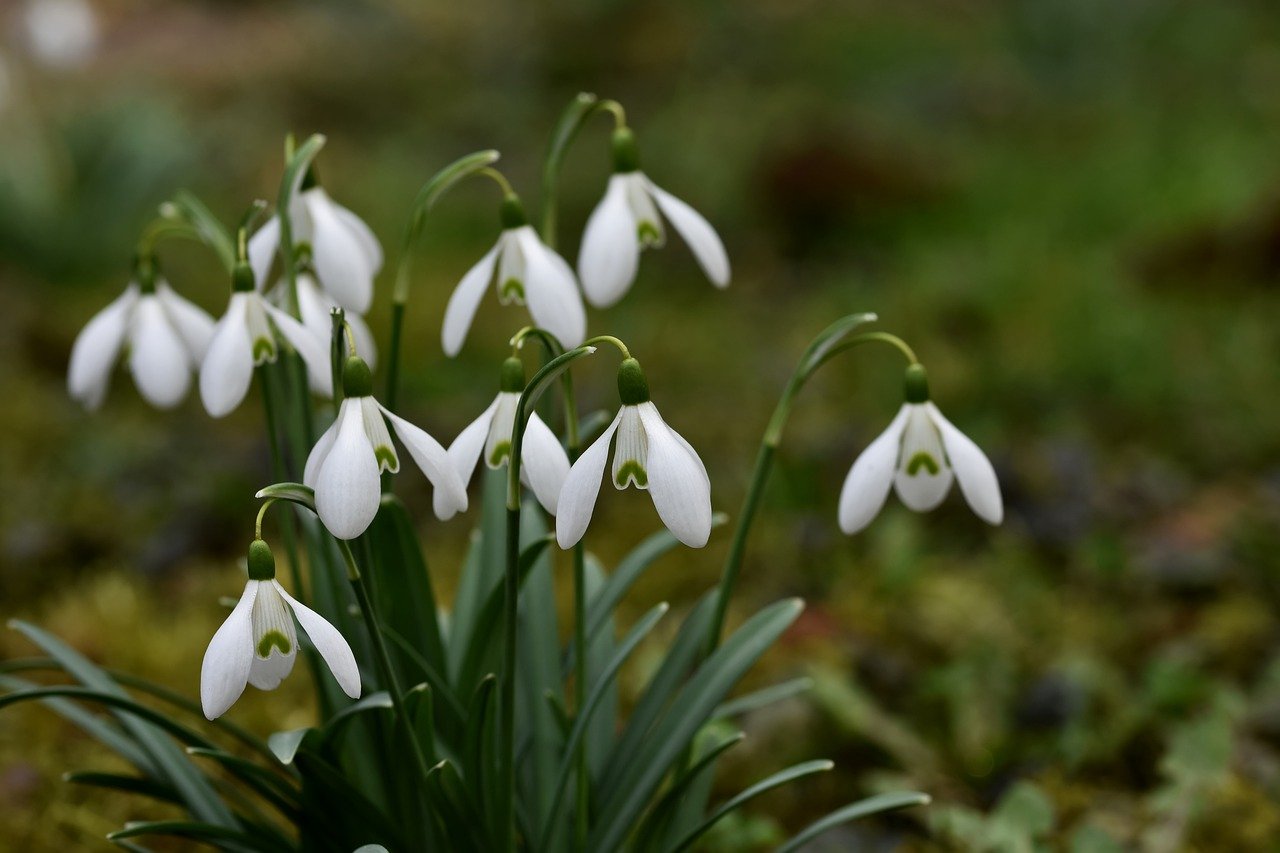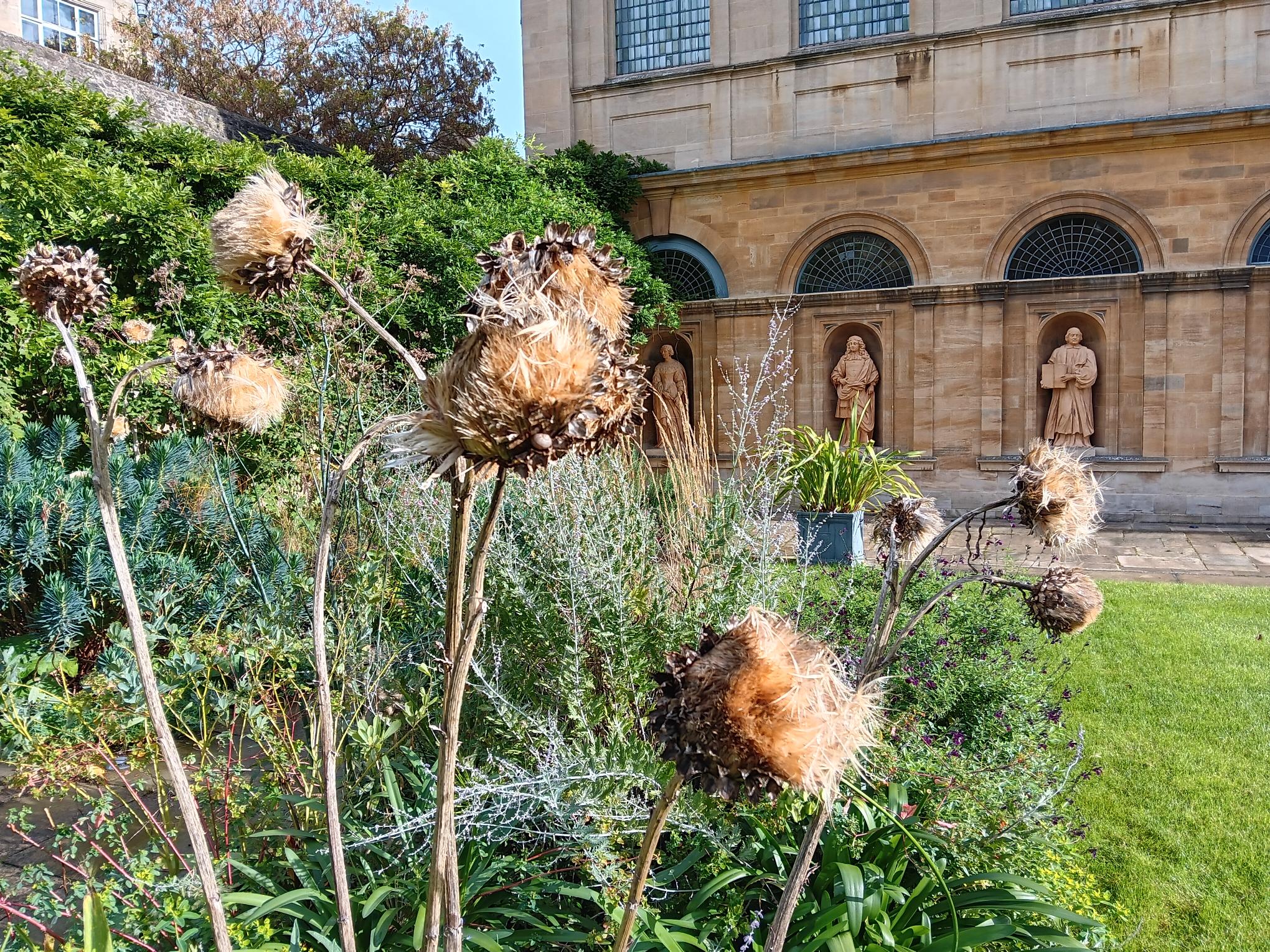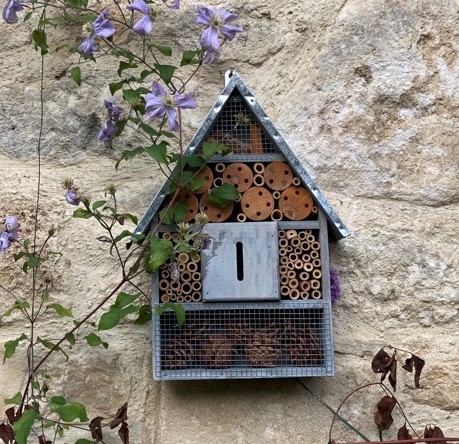Blue Belles
We are well into spring now, and it feels later in the year than it is, as some plants, like the Fuji Cherries and Magnolias, flowered a whole month earlier than they did last year, due to a mild, wet winter. And while I am writing this, in early April, I can already see blooms I’d expect emerging in early May.
One of the joys of this time of year is the wonderful sight of a bluebell wood in full flower. Blue flowers are relatively rare and blue wildflowers even more so. Luckily for the residents of Oxford there are several bluebell woods locally and I encourage you to get to one soon.
These woods are not just visually delightful, but also vitally important sanctuaries for this threatened wildflower. Around 50% of the world’s entire population of Hyacinthoides non-scripta, the native bluebell (often called English Bluebell), is found in the British Isles.
As custodians of this beautiful flower, it is our duty to look after it, and it is legally protected. There are several factors causing the decline, the first of which is habitat loss. Most bluebells are found in old woodlands and hedgerows which have been disappearing from the landscape. Seeing bluebells in a woodland or hedgerow is generally a good indication that it is ancient. Other factors include that bluebells can be easily damaged by people trampling on them when visiting the countryside, and the seeds take between five and seven years to grow to flowering size.
Another threat is posed by its cousin Hyacinthoides hispanica, (commonly referred to as the Spanish bluebell). Since Victorian times this ornamental plant has been extensively planted in British gardens. Unfortunately, it has also found its way into natural landscapes and is spreading rapidly – via vigorous garden escapes managing to spread beyond boundaries of the gardens they were planted in, and some possibly taking root after being fly tipped in garden waste. But possibly they are also being planted into woods by well-intentioned people thinking they are replenishing the natural Bluebell populations.
Spanish Bluebells (Hyacinthoides hispanica) escaped from back gardens in Rose Hill into a roadside verge by the Littlemore roundabout.
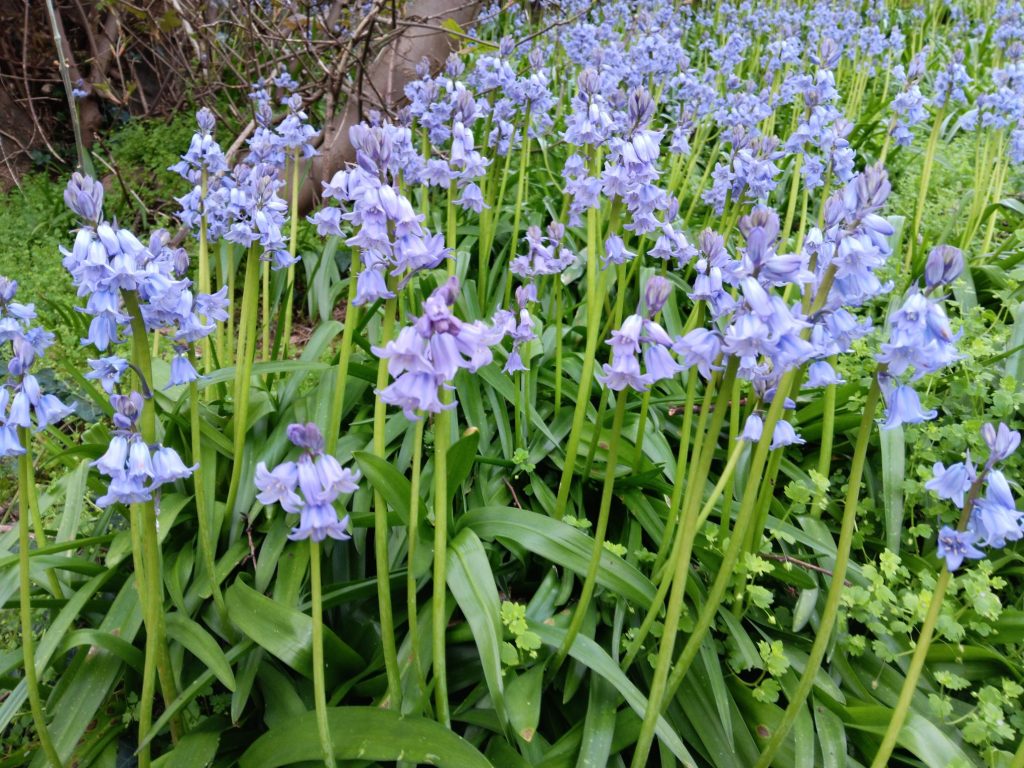
This plant will compete with the native plants, and by cross breeding with its close relative, produces the hybrid Hyacinthoides x massartiana that are much harder to tell apart from the native plant than the straight Spanish species is, so that after a while the English bluebells are replaced, without people even noticing the difference. The Spanish Bluebell has broader leaves (about 3 cm wide) and bigger, upright, flower-heads. Paler ‘Cambridge blue’ flowers are found all the way around the stem, whilst the darker ‘Oxford blue’ coloured native plants have all their gorgeously scented flowers in a row along a gently weeping flower head and tend to start flowering a touch later. The R.H.S. (Royal Horticultural Society) provide identification for their members via the RHS Gardening Advice service.
Unfortunately, all of the Bluebells I see in college and private gardens in Oxford look to me like Hyacinthoides hispanica or hybrids to me, including the ones on the main College site, and its student property at Oxley Wright. I intend to try and remove these over the next few years (it takes a while as there will be seed in ground that will grow after the plants were removed, and it is tricky not to miss a few bulbs).
You may ask why I or you should worry since they are in a garden. Well, yes, but the gardens are relatively close to wild populations of native bluebell and foraging bees fly up to 3 miles from their colony, so it’s possible for pollen from flowers in gardens to be transferred to native plants and produce seed that is hybrid.
If you know you have Hyacinthoides hispanica your garden, please consider removing it if there are wild populations close by.
However, there is no need to feel blue about losing your favourite flowers. If you can completely remove all of the invader, you can buy bulbs of native Bluebells to replace them. Please make sure that these are from a trusted company and not gathered from the wild, or miss-labelled Spanish bluebells. This is easier to do if you buy them ‘in the green’ so you can examine leaves before you plant them, or, to make sure there is no chance of mixing you can choose the following alternatives:
For those desperate to have lots of spring bulbs with blue bell shaped flowers, don’t despair: there are various Grape Hyacinths, such as Muscari armeniacum, which will quickly form a big patch. If the bulbs are fed whilst in growth you can dry them off after they go over and re-use them in pots the following year. Otherwise when the flowers finish, plant them out into a border, or naturalize in a lawn that’s not cut low in spring.
Grape Hyacinth, Muscari armeniacum ‘Esther’ is the perfect size for planting in pots for an early table top display, in a location where you can admire its delicate charm more closely.
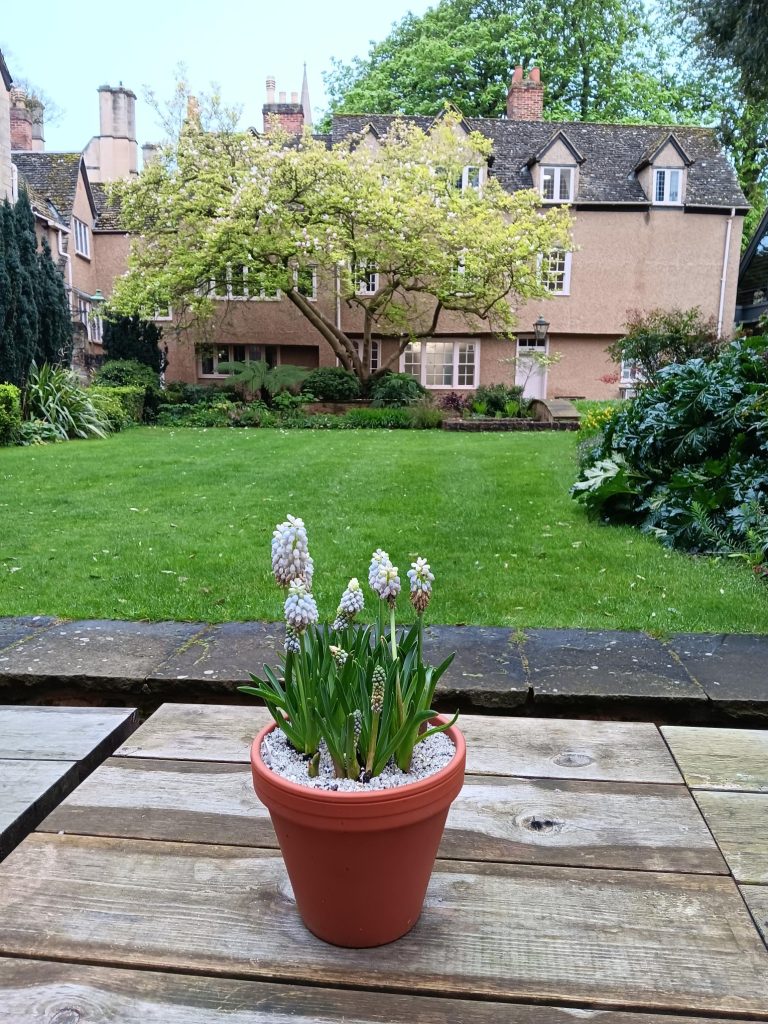
For something better behaved (Grape Hyacinths are sometimes invasive) and a bit bigger there are Bellevalia pycnantha or Scilla peruviana. Other options include Hyacinths (Hyacinthus orientalis), which come with the benefit of a delicious strong perfume, but unlike Hyacinthoides non-scripta they won’t be happy in very shady situations and will generally have smaller flowers or be ‘blind’ after the first years of flowering (if they haven’t had enough sun or fertiliser the previous year when ‘fattening’ up the bulb). Finally, for a taller, later bulb get Camassias, which can now be seen in the Fellows’ Garden.
Camassias are tall and elegant. The species ‘Quamash’ have edible bulbs that were an important part of the diet of indigenous Americans before land was settled by colonists.
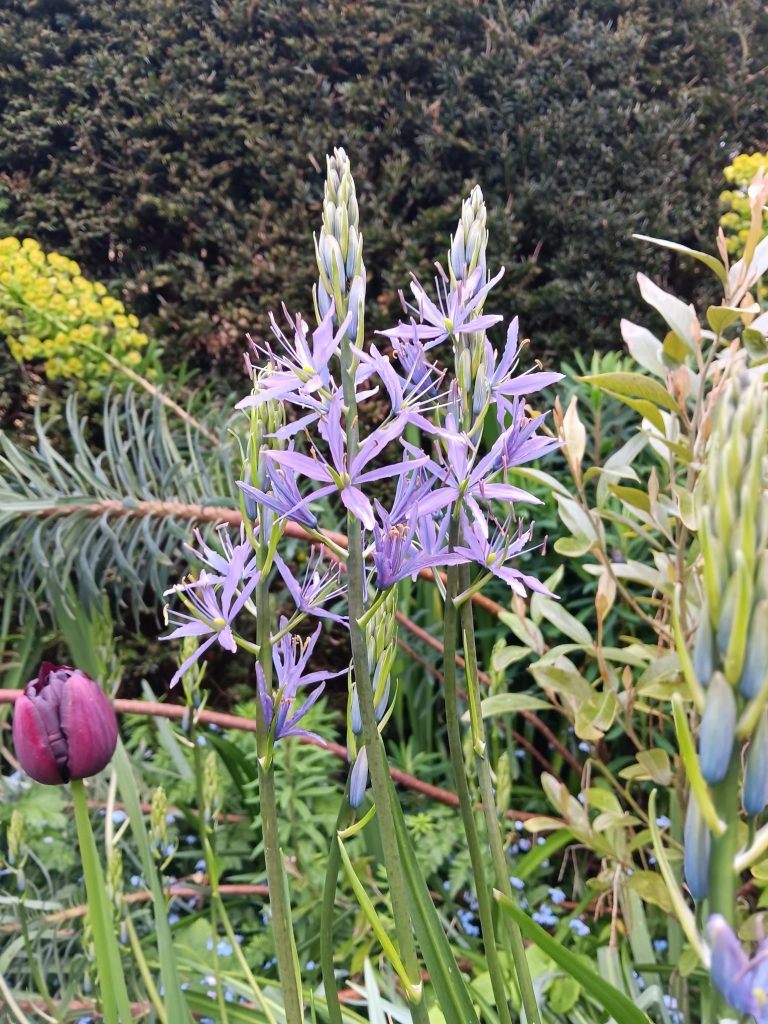
If you just want blue bell shaped flowers in your borders, and are not fussy about it being a bulb then in spring you can enjoy Pulmonaria ‘Blue Ensign’ or other Pulmonaria cultivars whose flowers fade to pink. At Queen’s we grow two types including Pulmonaria angustifolia ‘Diana Clare’ which has gloriously patterned leaves.
Pulmonaria officinalis, commonly known as Lungwort, due to the spotted leaves that caused it to be used in the treatment of diseased lungs.
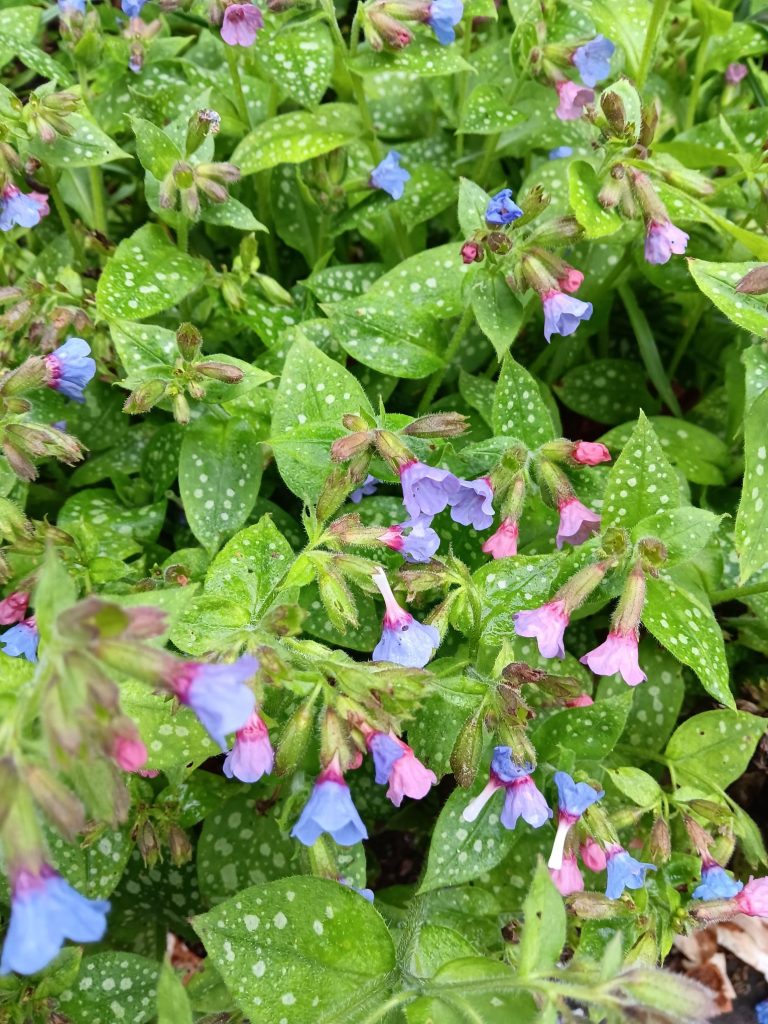
For huge carpets of paler blue try forget-me-not, like those in the Provost’s Garden. They are biennials, but happily self-seed if allowed to ‘go over’ rather than being removed as soon as they finish flowering.
Forget-me-not (Mysotis) at The Queen’s College. Ornamental cultivars make a lovely underplanting for spring bulbs, or wild forms can be grown in woodland or meadow, depending on the species.
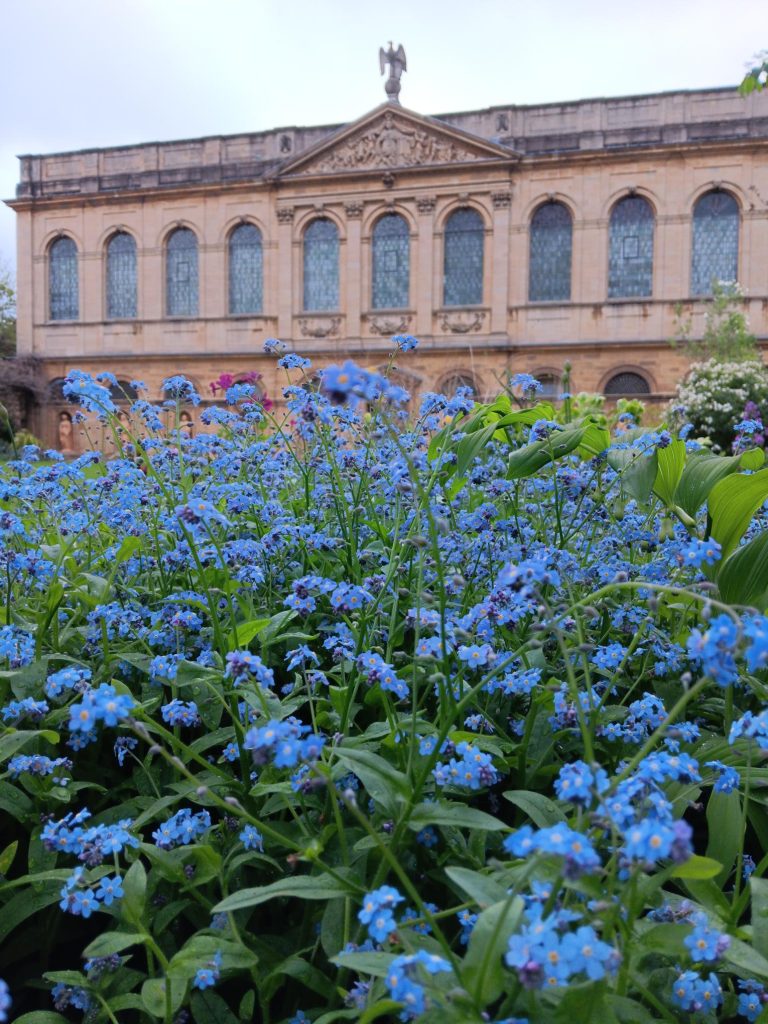
A perennial option would be Omphalodes cappadocia (which the eagle-eyed can find in the Fellows’ Garden), or for something bigger and longer flowering, you can try Brunnera macrophylla, whose cultivars often have the added interest of variegated leaves.
Omphalodes cappadocia provides intense blue blooms that catch the eye in the Fellows’ Garden, despite its diminutive size.
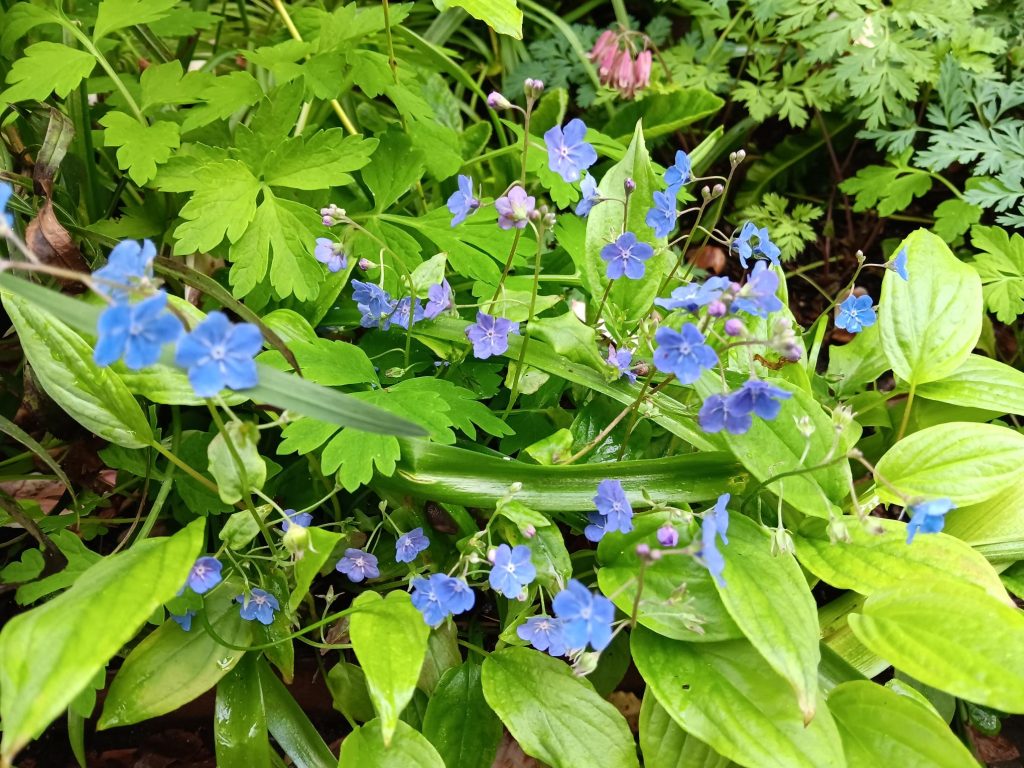
Brunnera can be found in the Fellows’ Garden and the Provost’s Garden and provides interest for much of the year due to the fabulous leaves.
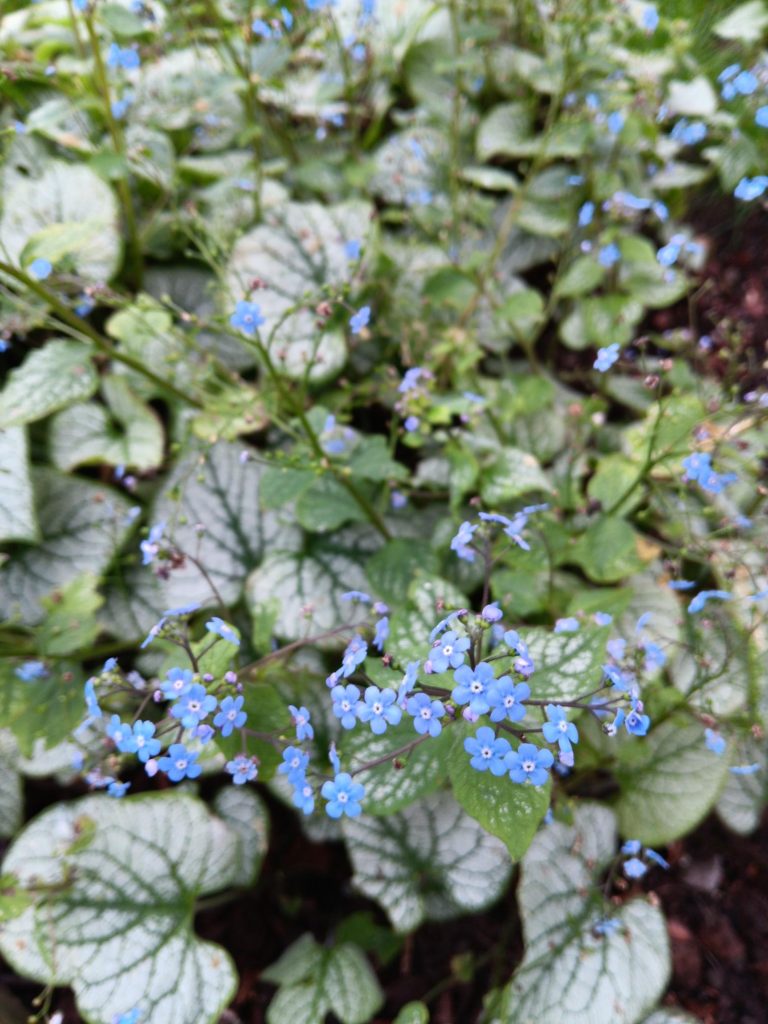
If you are content to wait a bit longer for your bolt of blue, you can enjoy those other floral blue bells, Campanula, some of which are native to the UK, and are available in a multitude of flower sizes and hights. Campanula glomerata, which has the common name of Clustered Bellflower, has a long flowering period, sometimes starting as early as May. Another long-flowering Campanula that produces masses of flower is Campanula poscharskyana, which is often seen growing on walls, or in cracks in paving. However, don’t plant it unless you are happy to have it ever after as it can be difficult to remove especially if you garden organically. If you fancy some huge bells try Campanula’Sarastro’, which I hope to plant at Queen’s. At the other end of the scale is the native harebell, Campanula rotundifolia, dangling its dainty thimbles in summer.
Should you wish to keep the theme going on into summer there are two more fantastic plants to search out: Firstly, a big shrub called Iochroma Australe, or Blue Angels Trumpet. They are considered tender, but I know of a couple that grow well in other College gardens, so I will try and get one for Queen’s.
Lastly, and more commonly grown, is Penstemons such as ‘Westminster Belle’. This plant was also considered tender, but will normally survive winters nowadays if you don’t cut off the old stems until the following spring. This has an enormously long flowering period if you deadhead, taking you through to autumn. Well, I hope that that if you are appalled by the plight of the native bluebell, and find any of the above alternatives appealing you will ring the changes and swap Spanish bluebells for different ‘Blue Belles’.

